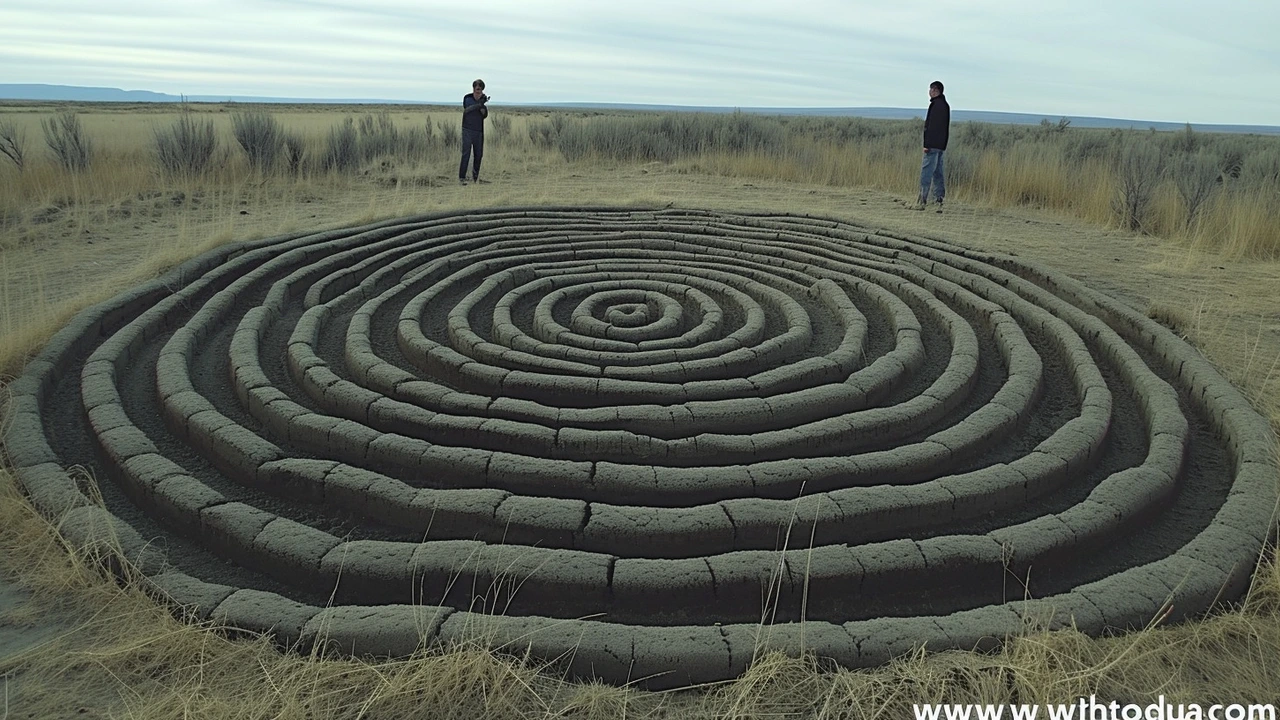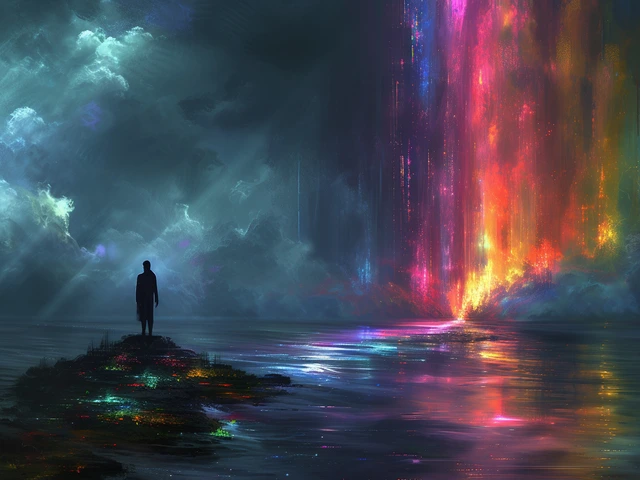Let's Begin the Journey: The Origin of Land Art
Wide-eyed and in utter astonishment, I recall my first encounter with land art. For a moment, I stood frozen in front of the beautifully constructed stone path in the heart of Sydney’s local park. Broad and twisting, like the confusing labyrinth of life itself, the stones seem to beckon me for more. The artist used the simple materials available to him - rocks, trees, and perhaps the most essential element - the Earth itself, and created something truly extraordinary. It's amazing how the mundane could be transformed into something so breathtakingly beautiful. That’s when I really got into the intricacies of land art.
This art form, sprouting in the 1960s and 70s, sought to diverge from the cluttered confinement of traditional galleries. To put it simply, artists decided to move out, literally. They took their easels and brushes, tossed them aside and embraced the vast, alluring canvas that Mother Nature herself presented.
The Art Outside the Gallery: Definition of Land Art
In essence, land art, or earthworks, as it is sometimes referred, is an art movement in which the artwork resides directly in the environment. Artists sought to render works inseparable from their locational context. These creations are not meant to be simple objects of visual pleasure, they were meant to integrate and engage, making the viewer part of the process.
The notion of creating art that cannot be bought or sold was, in some ways, a reaction against the commercialization of art. These works of art were colossal, free, and direct reactions to the conflicts of the era.
Land Art: Amazing Artworks that Stood Out
Many works of land art are fascinating once you start delving into this extraordinary world. For instance, "Spiral Jetty" by Robert Smithson, an iconic masterpiece of the Land Art movement, spiraling into the Great Salt Lake in Utah. It's a massive coil composed of mud, precipitated salt crystals, and basalt rocks. Its design and existence is fascinating.
Another notable earthwork is Nancy Holt’s ‘Sun Tunnels', based in the Utah desert. This featured four large concrete cylinders, cut in a way to allow sunlight to grace their interiors during the solstices. It's an astronomical and astute application of the land art concept.
Australian Land Art Pioneering new ways of Interaction
Australian artists have made a significant contribution to the Land Art genre through iconic pieces such as ‘Wrapped Coast’, conceptualized by Christo and Jeanne-Claude. This highlighted 3.2 kilometers of Australian coastline being wrapped in fabric, creating a surreal landscape defamiliarizing the commonplace.
The famous land artist Andrew Rogers’ work ‘Rhythms of Life’ based in over 14 countries, including Australia, is another fascinating instance of using the earth as canvas. He uses stone structures geographically positioned to create a global language of rhythm and form. His artwork is perceived differently based on the viewer’s geographic position, a truly intriguing concept.
Does it Last? - The Ephemeral Nature of Land Art
Land art is profound in its impact but peculiar in its life longevity. Some works last several years, like Smithson's Spiral Jetty, while others disappear due to natural phenomena like tides and weather, its ephemeral existence lending a degree of mystery and intrigue to the artwork. Following the philosophy of “ashes to ashes and dust to dust”, land art can undergo changes, sometimes fading back into the landscape from where it emerged.
The marriage of Art and Environment
There's a deep connection between land art and environmental activism. Pieces often highlight the beauty of nature and its importance. Andy Goldsworthy’s works and the ephemeral sculptures he creates from ice, leaves, rocks and other natural materials, are extraordinary examples of how delicate and fleeting the beauty of nature can be. By creating and photographing his pieces before they begin to fade back into their natural setting, like the morning dew, he pays homage to the beauty and transience of the natural world.
Why Land Art has its Place in Today’s Society
Land art is an evocative, compelling medium that compels us to reassess our interactions and relationship with nature. In today’s urbanized world, where nature is often forgotten amidst concrete jungles, it brings a sense of intrigue and wonder, reminding us to appreciate the beauty and power of nature.
Bringing Land Art to your own Backyard: DIY Tips
If you're inspired to create your own land art, here are some simple DIY tips. Start by thinking about the space in your garden. It can be as simple as creating spiral patterns with leaves, or as complex as making a stone labyrinth. Use local materials that blend naturally with your surroundings. Remember, the idea is to create something that works with nature, not against it.
Remember: Art is Everywhere
Land art is essentially a philosophy, an understanding that you do not need a dedicated space to create or appreciate art. You only need your imagination and a love for the beauty residing all around us. It promotes the idea that beauty can be found even in the most ordinary objects. As I walk down the winding stone path in the park nearby, grinning like a loon, I realize the potential of every pebble, every leaf and every blade of grass to be a part of something wonderful.




